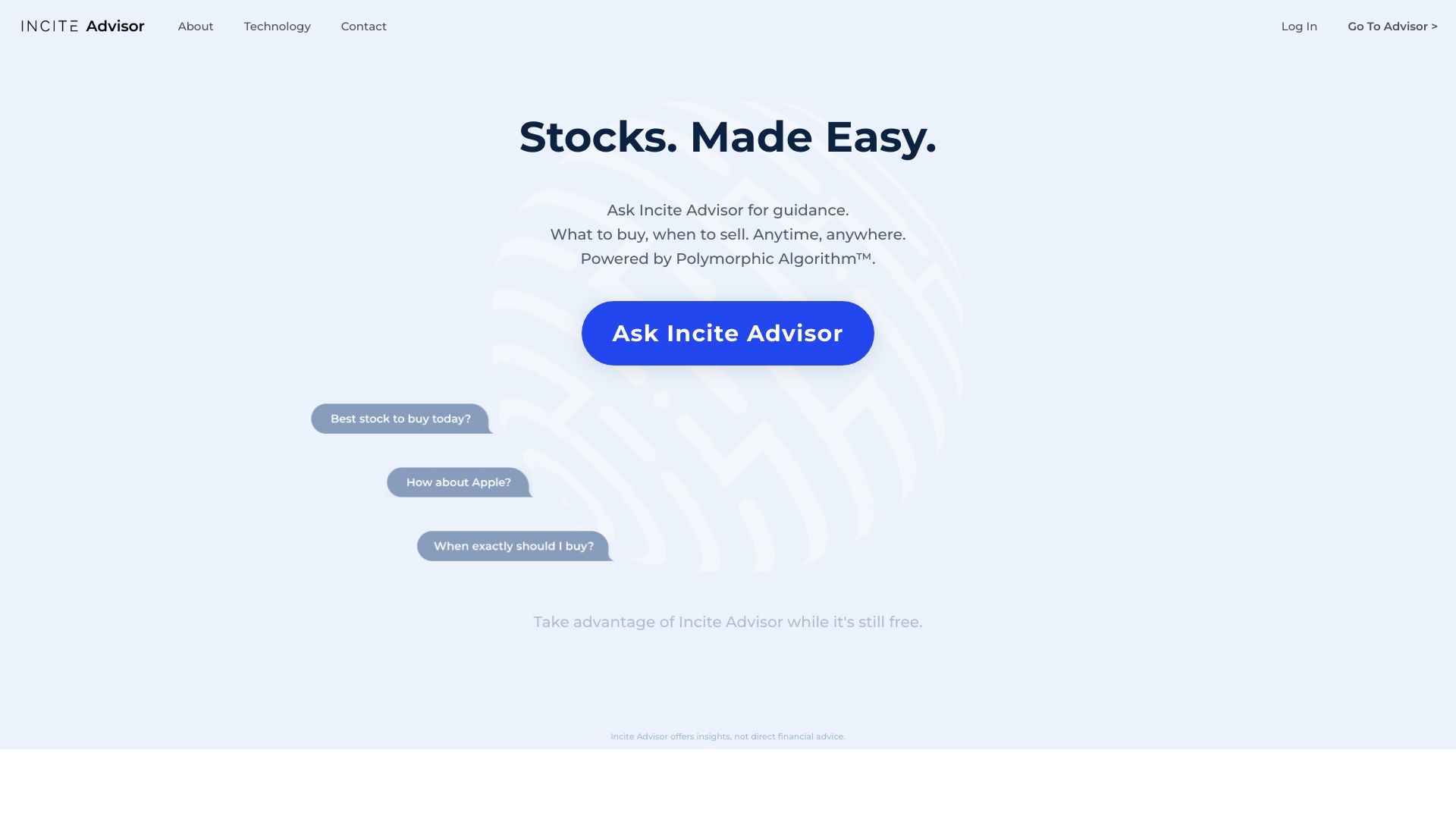AI platform for stock-predicting and analyzing stocks offer a number of customization options that let users customize their platform to suit their individual trading goals as well as their risk tolerance and market condition. A platform that provides an array of customizable options will improve your trading performance. Here are 10 tips to evaluate the flexibility of these platforms.
1. Evaluate Pre-Built Strategy Templates
A Variety of Templates: Check whether the platform that you trade on provides templates that are pre-built for various trading styles (e.g. Day Trading or Swing Trading, Long-Term Investment).
User-friendliness: Consider the ease of use required to apply and alter these templates to meet your needs.
Performance history: See whether the platform has historical performance statistics on the an already-built strategy.
2. Create a Custom Strategy
Drag-and-drop tools: Select platforms with drag-and-drop interfaces which permit you to quickly create personalized strategies.
Coding options: Find out if the platform supports customized code (e.g., Python, R or any other scripting languages) for advanced users.
Flexibility: Ensure that the platform lets you define your entry and exit parameters as well as risk management metrics as well as other crucial elements of your plan.
3. Check for Backtesting Capabilities
Historical data: Verify that the platform has sufficient historical data available to backtest strategies.
Customizable Parameters: You should be able to modify parameters, like timeframes and indicators, during backtesting.
Performance metrics: Ensure that the platform has detailed metrics of performance (e.g. Win rate Sharpe Ratio, Drawdown) in the back-testing of strategies.
4. Evaluate Real-Time Strategy Testing
Paper trading: Ensure that the platform allows you to simulate or test your strategies without putting any money at risk.
Live testing: Find out if you are able to test your strategies in real markets using small amounts capital.
Real-time Adjustments: Check whether you can adjust your settings in real time in response to market conditions.
5. Integrate Integration with Technical Indicators
Library of indicators: Find out if the platform offers an extensive library of technical indicators (e.g. Moving averages, RSI, MACD).
Custom indicators: Make sure that you have the ability to import or develop custom indicators for your plans.
Find out if you can combine multiple indicators in order to develop more complex strategies.
6. Check for Risk Management Tools
Stop-loss/take-profit: Ensure the platform allows you to set stop-loss and take-profit levels within your strategies.
Position sizing. Make sure you have rules in place for how to manage your risk (e.g. an amount that is set, percent of portfolio).
Risk-reward ratio: Examine the platform's support for setting risk/reward ratios for individual trades or strategies for trading.
7. Evaluate Multi-Asset Strategy Support
Asset classes: Check that the platform supports different asset classes, like ETFs, stocks and options.
Strategies for cross-assets : You can develop strategies that incorporate multiple asset categories (e.g. pair trading, hedges).
Market coverage: Make sure the platform covers the markets in which you're interested (e.g. US and international markets, copyright and so on.).
8. Review the automation and Execution
Automated trading: Ensure that the platform is capable of automating strategies based upon predefined rules.
Order types: Check whether the platform supports different order types (e.g., limit, market stop, limit) to enable strategy execution.
The Latency Checker: Ensure that the platform permits trades to be executed with minimum latency. This is particularly important when it comes to high-frequency strategies.
9. Check for Strategy Optimization Tools
Optimization of parameters: Make sure the platform has tools for optimizing strategy parameters (e.g. grid search and genetic algorithms).
Machine learning: Make sure the platform is machine learning that can be integrated to improve and improve strategies.
Scenario analysis: Make sure that the platform can test strategies under different market conditions (e.g. volatile bull, volatile, bull or bear).
Review Community Feedback and User Feedback
The feedback of users is crucial to assess the performance of an application.
Community forums: Find out whether the platform has an active community where users share and discuss custom strategies.
Support resources: Make sure whether the platform offers documentation, tutorials, and webinars to help users create and optimizing strategies.
Bonus Tips
Trial period for free: You can try out the customizable options of the platform by using an online demo or a trial period for free.
Scalability: Ensure the platform you choose to use can handle complex strategies that evolve as you trade.
Support for customers: Find out whether the platform is able to provide assistance with strategy-related issues or questions.
These guidelines will assist you assess the options for customization of AI trading platforms that predict/analyze the performance of stocks. So, you'll be able to pick one that best suits your goals in trading, and allows you refine and apply your strategies. Platforms with strong customization capabilities can help you adapt to the changing market conditions and improve the performance of your trading. Have a look at the top related site for ai investment platform for blog info including best AI stock trading bot free, ai investing app, AI stock trading, chatgpt copyright, options ai, ai for investment, ai investing platform, best AI stock trading bot free, AI stock picker, market ai and more.

Top 10 Tips On How To Assess The Updating And Maintenance Of AI stock Analysing Trading Platforms
Monitoring the up-to-date and maintenance of AI-powered trading and stock prediction platforms is critical to ensure they are secure, efficient and in tune with the changing market conditions. These are the top 10 ways to analyze their update and maintenance practices:
1. The frequency of updates
Find out the frequency of your platform's updates (e.g. every week, monthly or even quarterly).
Regular updates show the ongoing advancement of the product as well as a willingness to respond to market developments.
2. Transparency is the key to the Release Notes
Tips: Read the platform's release notes to understand what changes or improvements are being made.
Transparent release notes indicate that the platform is dedicated to ongoing improvements.
3. AI Model Retraining Schedule
Tip: Ask how frequently the AI models are refreshed with new data.
The reason is that markets change, and models have to be re-evaluated to ensure their precision.
4. Bug Corrections and Issue Resolution
Tip: Determine how quickly the platform responds to issues or bugs that users report.
What's the reason? Rapid corrections to bugs will ensure the platform will remain efficient and stable.
5. Updates on security
TIP: Check that the platform is regularly changing its security procedures to secure the user's data and trade activity.
Why? Cybersecurity is important in financial platforms, to stop fraud.
6. New Features Integration
Examine the platform to determine if it has added new features that are based on user or market feedback (e.g. an enhanced analytics).
Why: New features demonstrate flexibility and responsiveness to the needs of users.
7. Backward Compatibility
Tip : Make sure that any updates don't interfere with existing functionality or require major configuration.
The reason: Backward compatibility provides an enjoyable user experience during transitions.
8. Communication with Users During Maintenance
Tip: Check how users are informed of scheduled maintenance or downtime.
What is the reason? Clear communication prevents interruptions and increases confidence.
9. Performance Monitoring, Optimization, and Analysis
Tips: Make sure that the platform is constantly monitoring the performance metrics like accuracy or latency, and also improves their systems.
What's the reason? Continuous optimization ensures the platform remains efficient and scalable.
10. Compliance with changes to the regulatory framework
Check if the platform has updated its features and policies in order to be compliant with any new privacy laws or financial regulations.
What's the reason? Compliance with regulations is required to avoid legal liabilities and to maintain trust among consumers.
Bonus Tip: User Feedback Integration
Check whether the platform incorporates feedback from users in its upkeep and updates procedures. This demonstrates a user centric approach as well as a dedication to improvement.
When you look at all these elements, it's possible to ensure that you're sure the AI stock trading platform you choose has been maintained properly. It must also be up-to-date and adaptable to market changes. Have a look at the best sell for how to use ai for stock trading for blog recommendations including can ai predict stock market, AI stock prediction, AI stock trader, invest ai, best stock prediction website, free ai tool for stock market india, ai for trading stocks, best AI stocks to buy now, stock predictor, AI stock trader and more.
